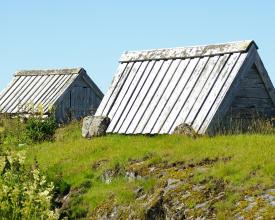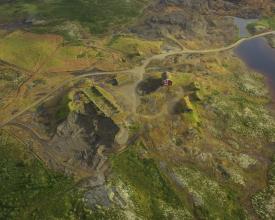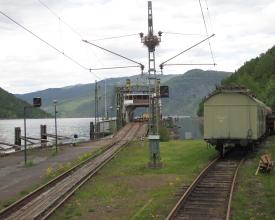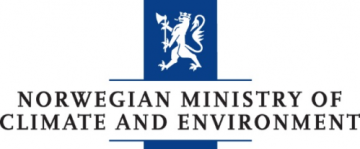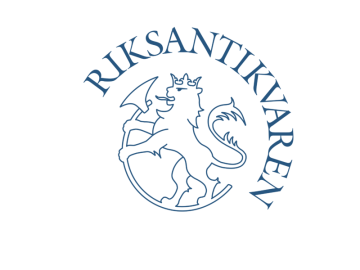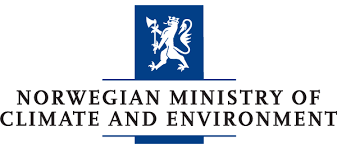
World Heritage in Norway: national policy for an inclusive and participatory implementation of the World Heritage Convention
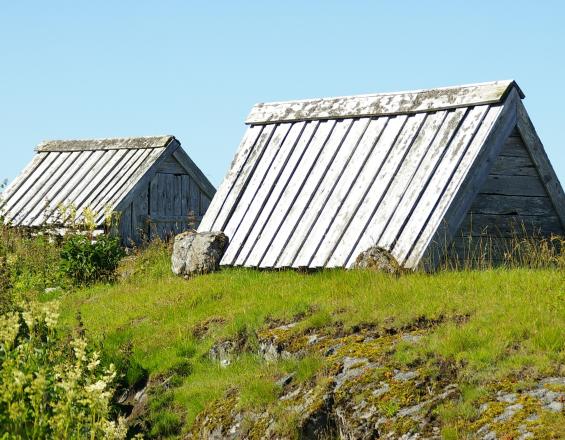
The solution focuses on the national-level policy and set up in place in Norway to implement the World Heritage Convention. It showcases Norway;s high ambition in implementing the Convention and in ensuring the best possible management and conservation at World Heritage properties. The solution refers to the policy set out in detail in the Report to the Storting (white paper) no.35 (2012-2013) (Chapter 4.8 World Heritage) which is continued in the Report to the Storting (white paper) no.16 (2019-2020) as well as to the 1978 Cultural Heritage Act.
The solution addresses the mandate of the Ministry of Climate and Environment which is responsible for both cultural and natural heritage and as well as the creation of national and local means to ensure enhanced dialogue and communication among multiple stakeholders on world heritage. This includes an interministerial forum, local advisory boards, the designation of World Heritage coordinators and the implementation of capacity building activities.
Context
Challenges addressed
- Environmental challenges: Sustainable development of World Heritage properties.
- Cultural and social challenges: The need to strengthen the participation of local stakeholders and communities in the management and decision-making processed of World Heritage properties; The need for dialogue with local communities and local actors, ensuring management capacity at World Heritage properties.
- Economic challenges: The need to balance development needs and protection of the Outstanding Universal Value of World Heritage properties.
Location
Process
Summary of the process
The policy framework addresses the need for coordination among several ministries and multiple local, regional and national authorities as well as communities and local stakeholders. The interaction between ministries has been facilitated through the establishment of an interministerial World Heritage Fourm (BB2) while at property level, management has been strengthened and dialogue amongst stakeholders is fostered through the designation of World Heritage coordinators (BB3) and World Heritage Advisory Boards (BB4) which act as key driver for dialogue and awareness raising.
Through a commitment to World Heritage capacity building (BB5), Norway is a driver and donor behind the World Heritage Leadership Programme.
Building Blocks
National Policy: Report to the Storting (white paper) no. 35 (2012-2013) The Cultural Heritage Policy
Chapter 4.8 of the Report to the Storting (white paper) no. 35 (2012-2013) - The Cultural Heritage Policy specifically tackles the aspect of World Heritage and sets out the Norwegian policy on World Heritage management in Norway.
World Heritage properties require protection to safeguard their Outstanding Universal Value. The management of World Heritage properties includes the involvement of a range of sectors and stakeholders including several ministries, each with sector responsibilities concerning the cultural and natural heritage, as well as national, regional and local authorities. The policy has been created as a response to an increased focus on the management of world heritage properties, as well as the need for clarifying roles and responsibilities of the different stakeholders and to allow for better coordination and collaboration between the different sectors involved in the management and conservation of World Heritage properties.
Enabling factors
Norway was among the first countries to become a State Party to the World Heritage Convention after ratifying it in 1977. Norway’s high ambition in effectively implementing the World Heritage Convention has been the key driver for the development of a policy focused on clarifying roles and responsibilities on the matter of World Heritage management and conservation.
Lesson learned
The policy implemented through Chapter 4.8 of the Report to the Storting (white paper) no. 35 (2012-2013) is perceived as successful, and the priorities have been continued in the new white paper on cultural heritage presented in 2020, Report to the Storting (white paper) no. 16 (2019-2020) Nye mål i kulturmiljøpolitikken. Engasjement, bærekraft og mangfold" ("New goals for the cultural heritage policy – engagement, sustainability and diversity" (unofficial translation)).
The adoption of the policy has led to increased focus on the roles and responsibilities of the different stakeholders in the management of World Heritage properties.
Interministerial World Heritage Forum
The Ministry of Climate and Environment is the responsible ministry for the follow-up of the World Heritage Convention in Norway. The Norwegian Directorate for Cultural Heritage and the Norwegian Environment Agency are responsible for national implementation of the convention. Several other ministries have sector responsibilities for cultural and natural heritage. In order for the convention to be effectively implemented and coordinated, Norway has set up an interministerial world heritage forum which is organized as biannual meetings by the Ministry of Climate and Environment. The aim of the forum is to raise awareness amongst the ministries of the obligations arising from the World Heritage Convention, so that the various authorities are best coordinated in the management of the World Heritage properties.
Enabling factors
The forum is planned within the framework of the Report to the Storting (white paper) no. 35 (2012-2013) The Cultural Heritage Policy (Chapter 4.8 World Heritage) and the Report to the Storting (white paper) no. 16 (2019-2020).
Lesson learned
The Interministerial World Heritage Forum is an effective platform for dialogue between national institutional stakeholders and to raise awareness of the obligations of the stakeholders /convention.
World Heritage coordinators
To ensure the dialogue with local communities and stakeholders as well as their participation in World Heritage processes, the Norwegian policy foresees the identification of a World Heritage coordinator at each World Heritage property. The role of the coordinator is to coordinate dialogue and information flow between national institutions and local governments, communities and stakeholders. A yearly meeting has been established between the world heritage coordinators, the Ministry of Climate and Environment and the directorates with the aim to facilitate this dialogue. A world heritage coordinator is in place at all eight world heritage properties in Norway.
The World Heritage Coordinators work together with local stakeholders in enhancing local capacities through awareness raising and outreach campaigns aimed at communicating the Outstanding Universal Values and other values of the properties and in enhancing local understanding of what World Heritage is and what the requirements are, also looking at the importance of balancing development and conservation needs.
Enabling factors
World Heritage Coordinators are established within the framework of the Report to the Storting (white paper) no. 35 (2012-2013) The Cultural Heritage Policy (Chapter 4.8 World Heritage) and the Report to the Storting (white paper) no. 16 (2019-2020).
Lesson learned
- World Heritage coordinators play a significant role in ensuring the effective implementation of the World Heritage Convention at inscribed properties. The task requires to be up to date with changes in the mechanism and knowledge applied to the implementation of the convention (including changes in the Operational Guidelines) and for this reason it has proven important to ensure that World Heritage coordinators have access to knowledge and up-to-date information as well as to be able to participate in capacity building activities (for example training courses or site managers’ fora).
- The work of a World Heritage coordinator is effective when local communities and stakeholders are involved and aware of the importance and value of World Heritage properties. The role of the coordinator is to strengthen local understanding of the property and local participation in World Heritage processes.
- The establishment of the annual world heritage coordinator meeting has been essential in securing the information flow from national level and to secure information flow between coordinators.
Advisory Boards at each World Heritage property
Local ownership, local responsibility and local involvement are tools for the best possible management of the World Heritage properties. With a view to strengthen ownership, responsibility and involvement, local World Heritage advisory boards have been established at each property. These boards include members from different stakeholder groups and authorities. The world heritage coordinator takes part in the World Heritage advisory board. The board will discuss issues of relevance for the management of the particular world heritage property, ensuring that local decision-making does not compromise but rather support the world heritage values of the property.
Enabling factors
World Heritage Advisory Boards are developed and put in place within the framework of the Report to the Storting (white paper) no. 35 (2012-2013) The Cultural Heritage Policy (Chapter 4.8 World Heritage) and the Report to the Storting (white paper) no. 16 (2019-2020).
Lesson learned
- World Heritage Advisory Boards are important tools for local involvement at World Heritage properties. The advisory board is a key element to coordinate the work of multiple stakeholders at one property.
- The establishment of world heritage advisory boards have been important for raising awareness of the obligations in the management of world heritage properties.
World Heritage capacity building initiatives
Norway is committed to working towards the full and effective implementation of the World Heritage Convention both nationally and internationally. Nationally, the Ministry of Climate and Environment, together with the Norwegian Directorate for Cultural Heritage and the Norwegian Environment Agency, organizes annual meetings with World Heritage coordinators, with the aim of creating dialogue and disseminating information necessary for a positive development of the World Heritage properties.
Internationally, Norway is a driver and donor behind the ICCROM/IUCN World Heritage Leadership Programme which is a global capacity building programme on the management of nature and culture at world heritage properties. Norwegian stakeholders are able to participate in the activities under the World Heritage Leadership Programme and several programme activities are held in Norway.
Enabling factors
Capacity building in relation to World Heritage is included in the Report to the Storting (white paper) no.35 (2012-2013) Cultural Heritage Policy (Chapter 4.8 World Heritage) and the Report to the Storting (white paper) no.16 (2019-2020). Within the framework of the World Heritage Leadership Programme, the planning and implementation of capacity building activities is done by the Advisory Bodies (ICCROM, IUCN, ICOMOS) in cooperation with the Ministry of Climate and Environment. Other international partners are involved, such as the UNESCO World Heritage Centre.
Lesson learned
- Capacity building is a key element for the planning and implementation of the World Heritage Convention and it is also one of its five strategic objectives of the World Heritage Convention. Building capacities is at the heart of effective management and conservation of world heritage properties.
- It is important that representatives from Norwegian World Heritage properties participate in international cooperation, thus contributing to raise the local World Heritage property's competence and capacity on its own type of World Heritage.
- Capacity building is deeply rooted into experience sharing and learning from each other’s experiences.
Impacts
Among the successful impacts is Norway's experience in incorporating the principles of the World Heritage Convention into the national-level policy, which reflects the importance of the interrelation of nature and culture in the management and conservation of heritage properties. Additionally, the solution addresses the following impacts:
- Environmental: Norway’s understanding of the interconnectedness of nature and culture begins with the inclusion of cultural heritage as part of the environmental solution. This is reflected in the institutional set up that sees the responsibility for cultural heritage policy placed under the Ministry of Climate and Environment. The management of cultural and natural heritage is followed up by two directorates: The Norwegian Directorate for Cultural Heritage and the Norwegian Environment Agency.
- Cultural and social: Communities and local actors are key stakeholders when it comes to the inclusion of local perspectives and in building capacities for the effective and inclusive management of World Heritage properties.
- Economic: Norway acknowledges the role that World Heritage can play in the sustainable socio-economic development of local communities.
Beneficiaries
The main beneficiaries of this solution are communities, local municipalities, institutional actors and stakeholders involved in the management and conservation of World Heritage properties in Norway.
